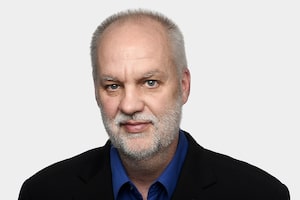Under a new Liberal-NDP pact, Canadians will be getting more publicly funded prescription drugs and dental care. That’s good news, at least on paper.
The bad news is that these things have been promised time and time again, and millions of Canadians still have grossly inadequate coverage. Will there be a different outcome this time?
The “supply-and-confidence” deal signed by Prime Minister Justin Trudeau and NDP Leader Jagmeet Singh, which will keep the minority Liberal government in power until 2025, includes two key health care promises. First, a dental-care program that will cover children under 12 this year, expand to those under 18 and people with disabilities in 2023 and be fully implemented by 2025 (coverage will be limited to families earning less than $90,000 a year, with no copays for those earning less than $70,000). Second, a “universal national pharmacare program,” including the adoption of a Canada Pharmacare Act, and having the new National Drug Agency develop a national formulary (a list of drugs that would be covered by public insurance) with a draft bulk-purchasing plan by the end of 2023.
What these promises have in common is that the details are incredibly vague.
Take “denticare,” for instance: What dental services will be covered? Will there be a hard cap? How much will the copay be? Will there be standards so that services offered are similar in every jurisdiction? How much will the program cost?
Currently, every province and territory offers some form of publicly funded dental care – mostly for severe cases requiring surgery. But these programs vary widely in scope. Quebec, for example, offers fairly extensive coverage for all children under 10, while B.C. focuses almost exclusively on those needing social assistance, offering up to $1,000 in coverage every two years for low-income adults and $2,000 every two years for those under 19. Ontario has several programs, including one for low-income seniors, one that focuses on children with cleft lip or cleft palate, a “Healthy Smiles” initiative for children, and dental decay prevention delivered by public health units.
All told, however, Canada has the lowest level of public funding for dental care in the developed world, accounting for only about 6 per cent of total health spending. The result is that 6.5 million Canadians don’t have any dental coverage, while most depend on employer-sponsored plans.
The Parliamentary Budget Officer has estimated that it would cost about $3-billion upfront and then around another $1.5-billion a year to address that gap and provide basic dental coverage to all.
Pharmacare – the term given to a universal prescription drug plan – has been talked about for decades in Canada. At present, more than 100 federal, provincial and territorial programs provide publicly funded insurance – mostly to seniors, people on social assistance and those with specific conditions such as diabetes and Fabry disease. But, again, coverage is all over the place.
A pharmacare program would extend coverage to the population more generally but it would not cover all drugs. There are about 19,000 approved prescription drugs in Canada, but the list of “essential medicines” that the government has committed to drafting would likely be about 200 commonly used drugs.
During the last federal election campaign, the NDP said its pharmacare proposal would cost about $10.7-billion annually but save the provinces about $4.2-billion thanks to bulk purchasing.
The new Liberal-NDP plan appears poised to not only bolster public coverage for low-income citizens but to shift some (eventually, all?) of those with private coverage to public plans for both dental care and prescription drugs. The plan also implies there will be means testing and copays for some services.
If dental care and prescription drugs are considered essential – which they are – then why can we not have means testing and copays for other essential services, such as hospital and physician care?
Opening that Pandora’s box may be an unintended consequence of this expansion of medicare.
But mostly, the question is a reminder that we need to address a really fundamental question: What is covered by medicare and what isn’t?
Expanding dental and prescription-drug coverage seems overdue. But what about long-term care, home care and mental-health care which all have huge and inequitable coverage gaps?
We still have the least-universal universal health care system in the developed world.
If we want it to be more equitable and affordable, at some point we need to articulate a vision and draft a comprehensive plan.
Occasional political stutter-steps won’t get us there.
Keep your Opinions sharp and informed. Get the Opinion newsletter. Sign up today.
 André Picard
André Picard